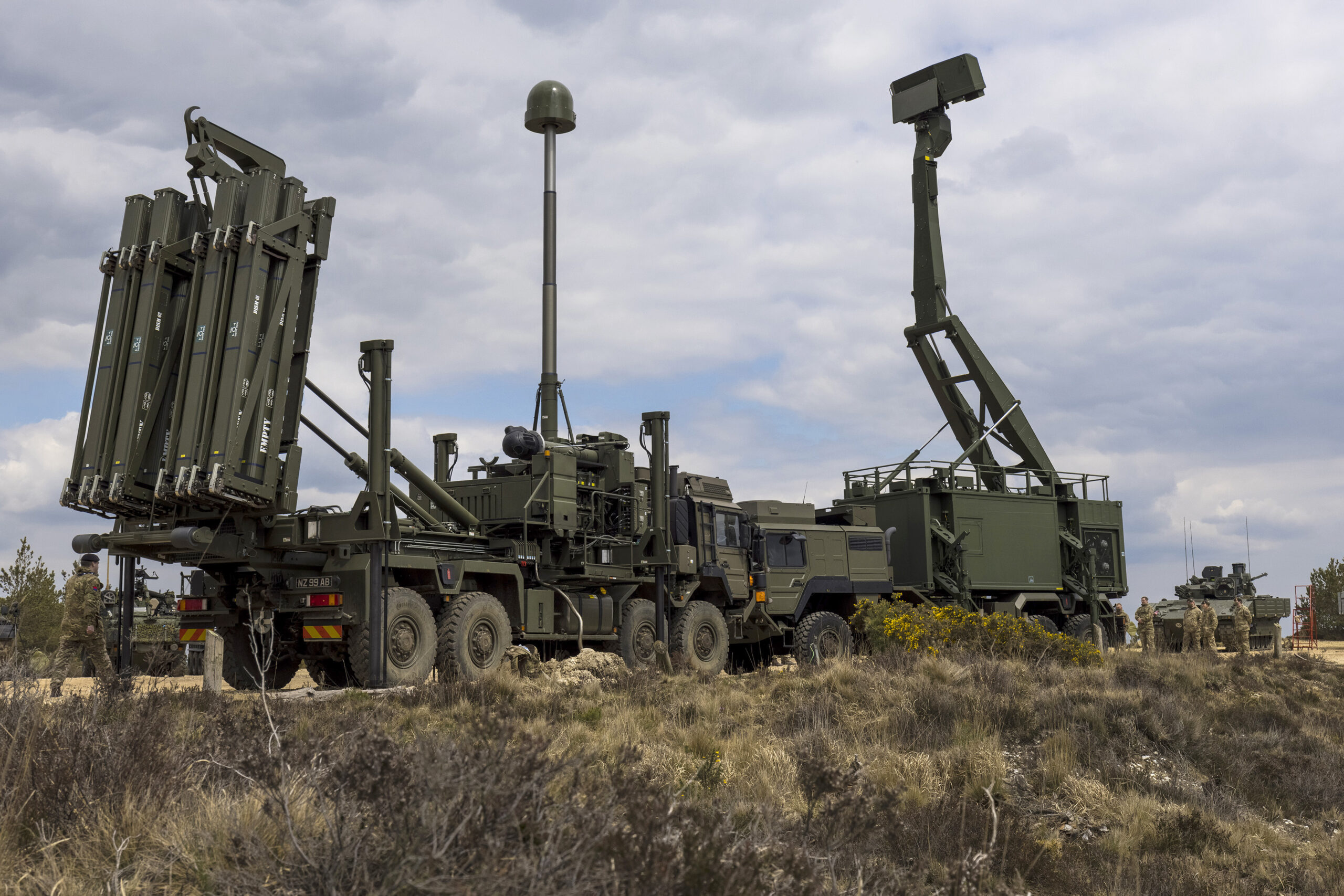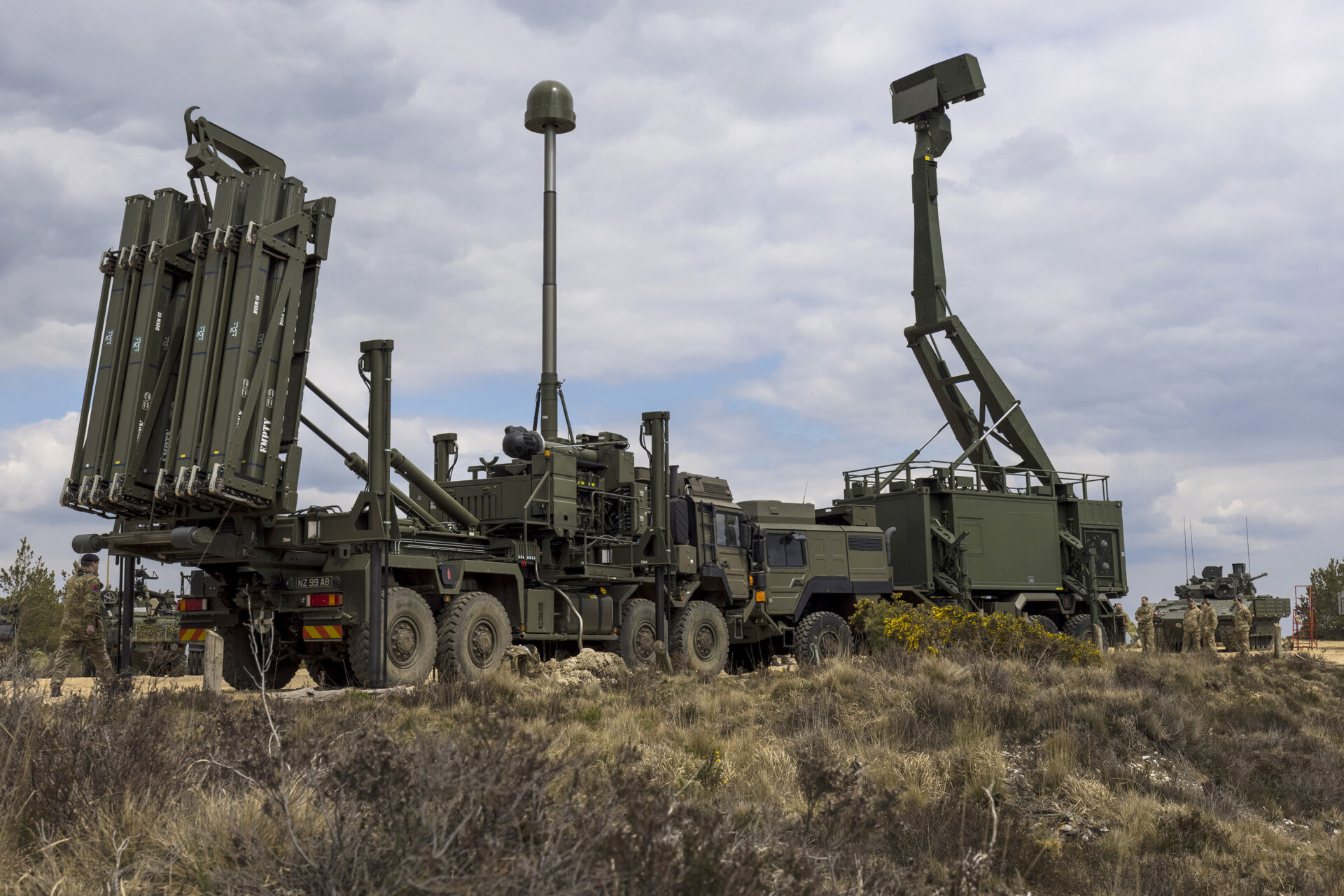The United Kingdom’s national resilience is a critical pillar of its security in an increasingly volatile global environment. As geopolitical tensions rise, particularly with adversaries such as Russia, the UK faces multifaceted threats that target its centres of gravity: key societal, economic, and infrastructural elements that underpin national stability. These centres include critical national infrastructure (CNI) such as telecommunications, water, energy, and social cohesion, which are vital to the functioning of modern society. In response to these threats, defence primes have advocated for investments in ground-based air defence (GBAD) systems, often citing Israel’s Iron Dome as a model for protecting against missile and drone attacks. However, the UK’s geopolitical and geographical context differs significantly from Israel, rendering direct comparisons problematic. While GBAD systems have a role, they are not the primary solution to the UK’s immediate threats, which are more likely to involve hybrid warfare, cyberattacks, and disruptions to CNI rather than conventional missile barrages. This essay examines the challenges to UK national resilience, the limitations of GBAD as a solution, recent events targeting UK vulnerabilities, and the broader strategies needed to bolster resilience within the NATO framework.
Understanding Centres of Gravity and UK Vulnerabilities
In military and strategic theory, centres of gravity are the critical capabilities or assets that, if disrupted, significantly weaken a nation’s ability to function. For the UK, these include CNI (telecommunications, energy, water, and transport), economic stability, public trust, and social cohesion. Unlike traditional military targets such as bases or airfields, these centres are civilian in nature but essential to national security. Adversaries seeking to undermine the UK are increasingly likely to employ hybrid tactics—combining cyberattacks, disinformation, sabotage, and economic disruption—to destabilise these assets without resorting to direct military confrontation.
Recent events underscore the vulnerability of these centres. In 2024, reports indicated that the UK faces approximately 90,000 cyberattacks daily, many attributed to Russia and its allies, targeting government systems, financial institutions (FSI), and critical national infrastructure (CNI). These attacks aim to disrupt digital infrastructure, steal sensitive data, or sow distrust in institutions. Additionally, suspected sabotage of undersea cables in the Baltic Sea in 2024 highlighted the fragility of the UK’s international communications networks, which are critical for economic and security functions. Such incidents demonstrate that adversaries prioritise non-kinetic means to degrade the UK’s resilience, exploiting its reliance on interconnected systems.

The UK’s population centres are also vulnerable to disruptions that do not involve missiles. Power cuts, for instance, could paralyse urban areas, disrupting healthcare, transport, and food supply chains. The 2019 UK power outages, though not attributed to hostile action, exposed how a single failure in the National Grid could affect millions, with hospitals and transport systems struggling to cope. Similarly, social media-inspired unrest, as seen in the 2011 London riots and more recently in Southport, illustrates how disinformation or orchestrated campaigns could amplify social tensions, undermining public order. These examples highlight that adversaries can achieve strategic goals by targeting civilian infrastructure and societal cohesion rather than military assets.
Defence Primes and the Push for GBAD Systems
Defence primes, such as MBDA and Northrop Grumman, have seized on the growing threat perception to advocate for enhanced air and missile defence systems, particularly GBAD. They point to Israel’s Iron Dome, which has successfully intercepted short-range rockets and drones, as a case study for why the UK should invest in similar capabilities. Israel’s system, designed to protect a compact nation surrounded by hostile actors, has proven effective against threats like Hamas rockets and Iranian drones, with a reported 90% interception rate in some scenarios. Defence primes argue that the UK’s Sky Sabre system, which entered service in 2021 and is capable of engaging aircraft, drones, and laser-guided bombs, could be expanded to provide a comparable shield. They also highlight the UK’s participation in the European Sky Shield Initiative (ESSI) and the NATO-led DIAMOND initiative as evidence of a growing need for integrated air and missile defence (IAMD).
However, the UK’s strategic context is markedly different from Israel’s. Israel faces immediate, short-range threats from neighbouring adversaries, with a compact geography that allows for concentrated defence systems. The UK, by contrast, is geographically distant from potential adversaries like Russia, with NATO allies forming a buffer across Europe. The UK’s larger size—11 times that of Israel—and dispersed population centres (75 cities with over 100,000 residents) make a comprehensive missile shield like Iron Dome technically and financially unfeasible. Moreover, the threats facing the UK are less likely to involve ballistic missiles and more likely to encompass cyberattacks, sabotage, and hybrid operations targeting CNI. As a senior defence source noted in 2024, the UK’s current air defence capabilities are “very limited” due to long-term underinvestment, but replicating Israel’s model would require billions of pounds and years to implement, diverting resources from other pressing needs.
The Limitations of GBAD in Addressing UK Threats
While GBAD systems like Sky Sabre and the Royal Navy’s Sea Viper missiles provide valuable capabilities, they are not designed to counter the most immediate threats to UK resilience. Sky Sabre, for instance, is effective against aircraft, drones, and some missiles but lacks the capacity to intercept intercontinental or intermediate-range ballistic missiles (IRBMs), which would require systems like the US’s SM-3 or Israel’s Arrow 3. Even if such systems were acquired, their deployment in Central Europe (e.g., Poland or Romania) would not protect the UK from IRBMs launched from Russia’s northern regions, as these could be lobbed over existing NATO defences. Furthermore, the UK’s six Type 45 destroyers, equipped with limited ballistic missile defence capabilities, are insufficient to protect the homeland against a saturation attack, with only two typically active at any time.

More critically, GBAD systems do not address the hybrid threats that are the primary concern for UK resilience. Cyberattacks on telecommunications, such as those targeting the UK’s 5G infrastructure, could disrupt emergency services, financial systems, and public communication, causing widespread chaos without a single missile being fired. Similarly, attacks on water infrastructure, such as the 2020 attempted poisoning of a US water treatment facility, demonstrate how adversaries could target essential services to undermine public health and confidence. Power outages, whether caused by physical sabotage or cyberattacks on the National Grid, could cripple urban centres, as seen in Ukraine, where Russia’s missile and drone attacks on energy infrastructure left millions without power. Social media-driven unrest, amplified by foreign disinformation campaigns, could further destabilise population centres, as evidenced by Russia’s alleged interference in Western elections and public discourse.
Investing heavily in GBAD, while appealing to defence primes, risks diverting resources from these more pressing vulnerabilities. The 2025 Strategic Defence Review (SDR) allocated £1 billion for IAMD, but it provided little detail on how this would address non-kinetic threats. A more holistic approach, as recommended by the House of Lords’ International Relations and Defence Committee, would prioritise resilience across CNI, cyber defence, and public preparedness over a singular focus on missile defence.
Recent Events and Hybrid Threats to UK Centres of Gravity
Recent incidents highlight how adversaries target the UK’s centres of gravity through non-traditional means. The suspected sabotage of undersea cables in the Baltic Sea in 2024, potentially linked to Russian hybrid operations, underscores the vulnerability of the UK’s telecommunications and energy supply chains, which rely on undersea infrastructure for 60% of gas imports and 8% of electricity. These cables are critical for maintaining economic stability and communication with NATO allies, and their disruption could isolate the UK or disrupt financial markets.
Cyberattacks also pose a significant threat. The 90,000 daily cyberattacks reported in 2025, primarily attributed to Russia, target government systems, CNI, and private sector entities, aiming to erode public trust and operational capacity. The National Cyber Security Centre (NCSC) has warned of increasing sophistication in these attacks, including ransomware and quantum-enabled threats, which could paralyse digital infrastructure. For example, a successful cyberattack on the UK’s energy grid could cause widespread power cuts, disrupting hospitals, transport, and food distribution, with cascading effects on population centres.
Social cohesion is another centre of gravity under threat. Russia’s disinformation campaigns, often conducted via social media, aim to manipulate public opinion and exacerbate divisions. The 2024 US election interference allegations, linked to Russian bots amplifying divisive narratives, suggest a similar risk to the UK, where polarised debates on immigration or economic policy could be exploited to incite unrest. Such tactics do not require missiles but can achieve strategic disruption by undermining trust in institutions and fostering chaos in urban areas.
Enhancing National Resilience: A Broader Approach
To counter these threats, the UK must prioritise resilience across multiple domains, as outlined in the 2025 National Security Strategy. This includes strengthening CNI through redundancy and cybersecurity measures, such as the NCSC’s efforts to transition to post-quantum cryptography by 2035. The establishment of the UK Resilience Academy and annual national exercises to test whole-of-society preparedness are steps toward empowering communities and local authorities to respond to crises. Public communication campaigns, such as the government’s “Prepare” website, can also enhance citizen readiness for disruptions like power outages or cyberattacks.
Investment in sovereign capabilities, such as secure supply chains for energy and telecommunications, is critical. The UK’s reliance on imported gas and undersea cables necessitates protective measures, such as the Multi-Role Ocean Surveillance Ship proposed in the 2021 Integrated Review (and now sat alongside, without sufficiently qualified and available RFA crew). Additionally, collaboration with NATO allies through initiatives like ESSI and DIAMOND can enhance interoperability and burden-sharing, reducing the need for the UK to develop standalone systems like Iron Dome.
The NATO Context and the Role of Alliances
Unlike Israel, which operates largely independently due to its unique geopolitical situation, the UK benefits from its central role in NATO. The Alliance’s collective defence framework, underpinned by Article 5, ensures that an attack on the UK would trigger a unified response from 32 member states. NATO’s Integrated Air and Missile Defence (IAMD) system, including US-provided SM-3 batteries in Poland and Romania, offers a layered defence against ballistic missiles, reducing the need for the UK to develop its own comprehensive shield. The UK’s contributions, such as its nuclear deterrent and leadership in initiatives like DIAMOND, strengthen this collective posture.
If an adversary like Russia were to fire missiles at the UK, it would likely occur in the context of a broader NATO conflict, implying that numerous other failures—diplomatic, strategic, and operational—had already occurred. The UK’s geographical distance from Russia, combined with NATO’s early warning radar network and rotational air defence deployments, provides a buffer that Israel lacks. Thus, while GBAD has a role in protecting specific high-value targets, such as nuclear power stations or military bases, it is not the primary solution for the UK’s immediate threats.
Conclusion
The UK’s national resilience faces significant challenges from adversaries seeking to degrade its centres of gravity through hybrid and non-kinetic means. While defence primes advocate for GBAD systems, citing Israel’s Iron Dome, the UK’s distinct geopolitical and geographical context makes such comparisons misleading. Recent events, such as cyberattacks and suspected sabotage of undersea cables, highlight the need to prioritise CNI protection, cybersecurity, and social cohesion over a singular focus on missile defence. The 2025 National Security Strategy and Strategic Defence Review underscore the importance of a whole-of-society approach, leveraging NATO alliances to enhance resilience. While GBAD systems have a place, particularly for point defence, they do not address the immediate threats of cyberattacks, infrastructure sabotage, or disinformation. By investing in resilience across multiple domains and strengthening NATO collaboration, the UK can better safeguard its centres of gravity, ensuring security in an increasingly contested world.
Lee Pilgrim
Lee Pilgrim tweets as @Mtarfalee



